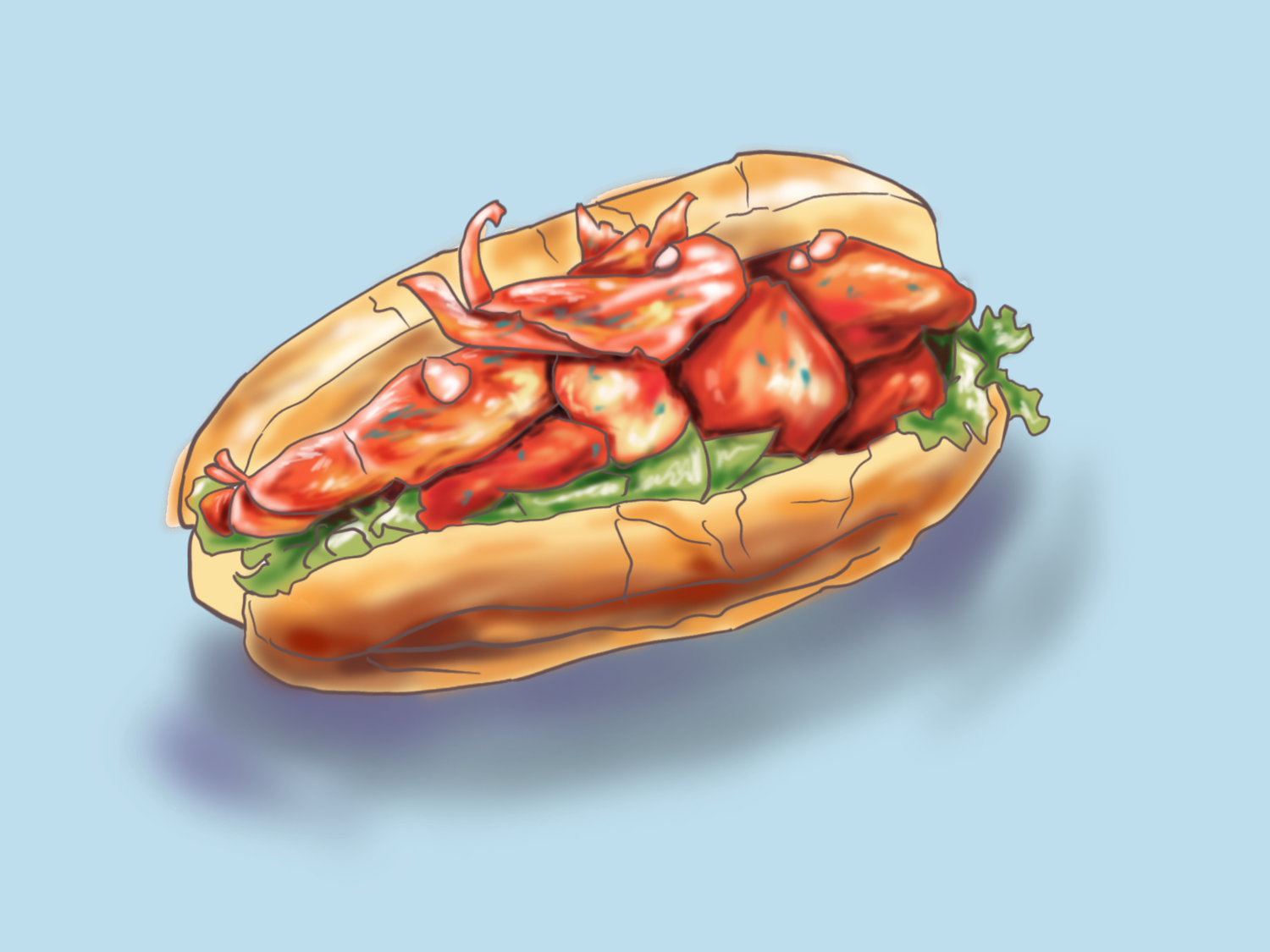
News
Harvard Lampoon Claims The Crimson Endorsed Trump at Pennsylvania Rally

News
Mass. DCR to Begin $1.5 Million Safety Upgrades to Memorial Drive Monday

Sports
Harvard Football Topples No. 16/21 UNH in Bounce-Back Win

Sports
After Tough Loss at Brown, Harvard Football Looks to Keep Ivy Title Hopes Alive

News
Harvard’s Greenhouse Gas Emissions Increased by 2.3 Percentage Points in 2023
What the Lobster Roll Means to Maine

The modern epitome of quiet luxury in New England is the lobster roll — a simple staple composed of lobster meat, mayonnaise or butter, and a bun. Lobster rolls are, simply put, expensive, and the normally hotdog-sized dish is often priced around $30 in Boston. Today, the lobster roll stands as a symbol of the pricey side of New England — but it wasn’t always like this, and it certainly doesn’t have to stay this way. Taking a look at the classic offering’s history in the state of Maine — America’s most popular lobster supplier — may teach us a lesson about remembering a dish’s roots and recentering our perception of food around its community instead of its prestige.
One of the earliest mentions of the lobster roll in the historical record comes from Connecticut in the 1920s, not Maine. The sandwich only began regularly popping up in the state in the 1950s. As summertime tourism increases throughout the state, the popularity of the lobster roll — and seafood in general — rises as well. While lobster rolls were a common seaside treat, they didn’t begin to take off in the general food scene until they were imported out of Maine in the 1990s — specifically to Pearl Oyster Bar in New York City, which popularized the sandwich on a national level.
Even as the lobster roll became a national staple, it was still clear that the highest quality crustaceans came from Maine. Grabbing a lobster roll became a must-do part of visiting Maine — therefore solidifying its integral role in the state’s economy. According to the Maine Office of Tourism, 151,000 jobs in Maine are supported by tourism alone — nearly a sixth of the state’s overall nonfarm workforce. Foodies searching for the perfect seafood are therefore key to the state’s economy. And the meat that packs visitors’ lobster rolls comes from another key demographic: the state’s historic lobstermen.
64% of seafood industry jobs in Maine come from wild-caught lobstering. While tourists may see lobster rolls as an expensive dish, lobstermen — as well as local restaurants and tourist areas— see them as a way to keep the lights on throughout the year. About 18,000 jobs in Maine depend on the lobster industry — meaning that maintaining the popularity of lobster rolls among all palates, from Michelin star chefs to everyday consumers, is crucial to keeping their businesses afloat. While out-of-staters may see lobster rolls as simply expensive treats, to some Mainers, they are key to the local economy’s livelihood.
In an interview with The Harvard Crimson, Julie Barker — the co-owner of Helen’s Restaurant in Machias, Maine — discussed how lobster rolls are viewed by Mainers. Helen’s is a local staple in the Downeast that has been serving lobster rolls for over 74 years. Barker highlighted how seafood brings together multiple businesses in Machias.
“Our number one seller at the restaurant is seafood,” Barker said. Helen’s works closely with local fishermen to keep this part of its business going.
“We’re lucky because we’re able to get it directly from each fisherman. They come right to the back door. We have a license to buy; they have a license to sell,” Barker said. To Barker, seafood sales are a way to root her restaurant in the larger Downeast community by supporting other locals.
Barker also explained what constitutes the optimal lobster roll: “A very inexpensive hotdog roll that is buttered and grilled on both sides. We do fresh lobster meat, and we offer mayonnaise lining the inside of the bun or drawn butter on the side,” Barker said.
Barker also noted that recent sales at Helen’s have reflected a surprising surge in the dish’s popularity.
“We had a real switch from the hot-boiled lobster to lobster rolls. They kind of took over,” Barker said.
The get-your-hands-dirty approach of a full lobster dinner has slightly faded away as lobster rolls have become more popular. This popularity is key to maintaining tourism rates in all of Maine, but especially in Washington County, which is an extremely rural area where every dollar brought in counts.
The history of the lobster roll, as well as its place in local Maine cuisine today, makes one thing clear: Lobster rolls are a group effort. Although their high price tags may seem like a status symbol, the dish is built upon the work of Maine lobstermen and local businesses. Lobster rolls represent Maine’s connection to its community of fishermen and working-class people.
Beyond this, the dish makes a point to fine dining: It’s best to look at more than just what’s on the plate. We need to understand the people behind Maine’s seafood and tourism industries if we want to truly hone in on what makes the lobster roll a staple of Maine. Instead of looking at the lobster roll as a result of over-the-top fine dining pricing, we should see it as what it truly is — a symbol of Maine’s commitment to community. While the mainstream view may be that lobster rolls are an expensive Bostonian menu header, they mean something more to those who work to maintain its popularity in Vacationland.
—Staff writer Hannah E. Gadway can be reached at hannah.gadway@thecrimson.com.
Want to keep up with breaking news? Subscribe to our email newsletter.
